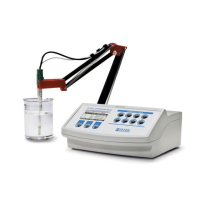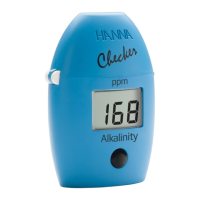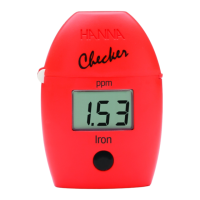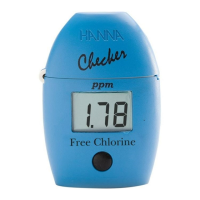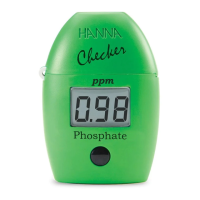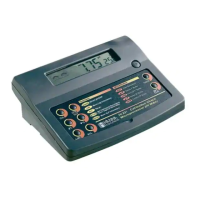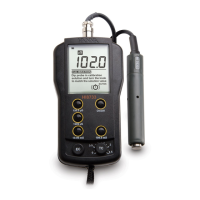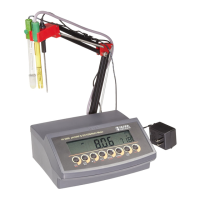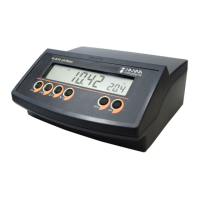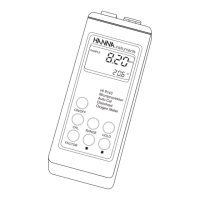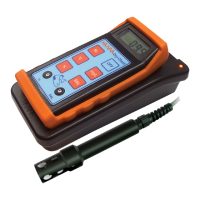1716
The conductivity of a solution with a specific electrolyte concentration
changes with temperature. The relationship of the change in conductivity
as a function of temperature is described by a solution’s temperature
coefficient. This coefficient varies with each solution and is user selectable
(see SETUP mode).
Two selectable temperature sources are available: reading directly from
the sensor inside the probe or manual entry.
Three options of linear temperature compensation are available:
Automatic: temperature readings from the sensor inside the EC probe.
Manual: temperature entered manually by the user.
No Temperature Compensation (No TC): The temperature shown on
the LCD is not taken into account. The meter displays the actual
conductivity.
To select the desired option enter SETUP menu (see page 40).
If the temperature is out of the -20 °C - 120 °C range the instrument will
not do temperature compensation.
TEMPERATURE COMPENSATION EC CHANNEL
The conductivity of an aqueous solution is the measure of its ability to
carry an electrical current by means of ionic motion.
The conductivity invariably increases with increasing temperature.
It is affected by the type and number of ions in the solution and by the
viscosity of the solution itself. Both parameters are temperature dependent.
The dependency of conductivity on temperature is expressed as a relative
change per Celsius degree at a particular temperature, commonly as
percent per ºC.
The following table lists the temperature dependence of the HANNA
calibration buffers.
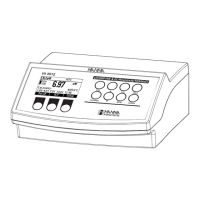
